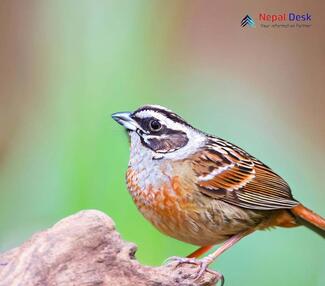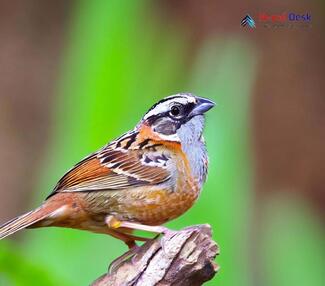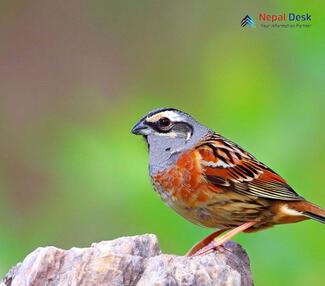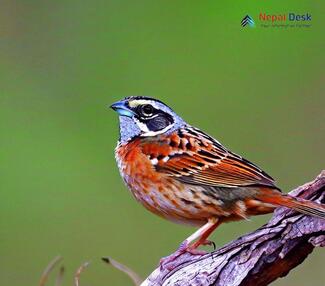The Rock Bunting (Emberiza cia) is a fascinating bird species that captivates bird enthusiasts across the globe. This striking songbird belongs to the Emberizidae family and is often confused with other members of its genus due to certain similarities. In this article, we’ll explore the Rock Bunting's taxonomy, physical features, habitat, diet, presence in Nepal, and an interesting point about this unique bird.
A Closer Look at Taxonomy
Rock Buntings belong to the order Passeriformes – the largest order of birds – which consists mainly of perching birds. The Emberizidae family within this order encompasses a variety of buntings and American sparrows. Divided further into different genera, Rock Buntings fall under the Emberiza genus, consisting of their closest relatives such as Ortolan Buntings (Emberiza hortulana) and Cirl Buntings (Emberiza cirlus).
Distinct Physical Features
One of the most distinguishing features of Rock Bunting is its attractive plumage. Adult males boast a beautiful mix of warm brown and grey feathers with bold black-and-white patterns on their heads. Females, on the other hand, have more subdued coloring overall but retain similar head patterns as males. Sporting a strong and conical beak enables them to crack seeds – a staple of their diet.
Habitats Across Varying Landscapes
Rock Buntings thrive in a range of habitats but are predominantly found in rocky areas like mountain slopes and scree-laden landscapes. They prefer altitudes between 300m and 2600m above sea level where vegetative cover is sparse. Rock Buntings inhabit regions across southern Europe, North Africa, and parts of the Middle East - including countries like Spain, France, Italy, Turkey, and Iran.
Dietary Preferences
Seeds and insects constitute the main components of the Rock Bunting's diet. They forage on the ground for plants like grasses, thistle, and sorrel, giving preference to seeds during non-breeding seasons. Alongside consuming seeds as their primary energy source, Rock Buntings also feed on various invertebrates, particularly during the breeding season to meet their protein requirements.
Presence in Nepal
Nepal is home to numerous bird species, including the Rock Bunting. They are seen in regions like Annapurna Conservation Area, Sagarmatha National Park, Langtang Valley, and other rocky terrains within the country. The bird's presence in Nepal aids in promoting eco-tourism activities across these regions as bird watchers from around the world come to observe these hidden gems.
An Interesting Point: Mimicry
One intriguing aspect of the Rock Bunting is its ability to mimic different bird species' songs. Though not as proficient as some other songbirds like Northern Mockingbirds (Mimus polyglottos), they have been observed incorporating elements from other birds' vocalizations into their own songs – a true testament to their versatility and adaptability.
In conclusion, a deeper understanding of Rock Bunting reveals the unique characteristics that set it apart from other species within its genus. From its striking appearance to its intriguing mimicry habits, this bird manages to capture our attention and appreciation for nature's wondrous diversity.




